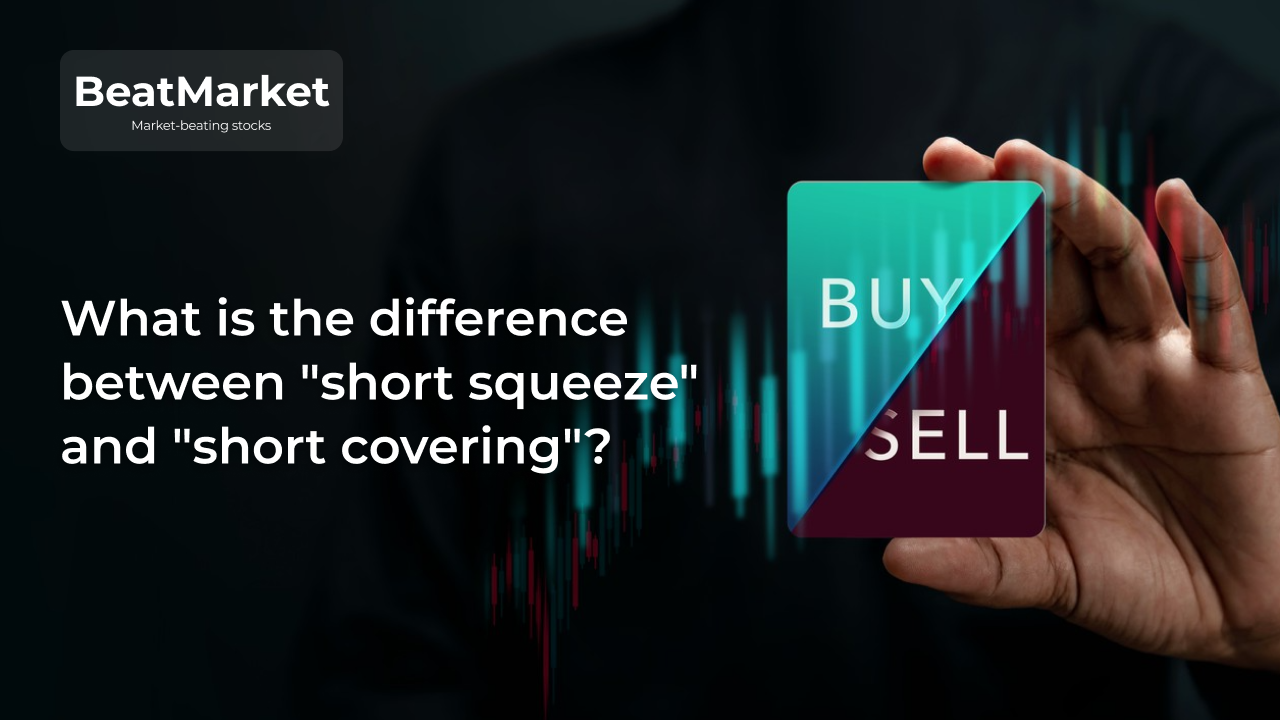A short selling occurs when an investor borrows a security. That is, making a sale of something the investor never had. Short Cover is the opposite of a trade. It closes out short positions. The trader buys back shares that were initially sold short.
When the short interest is high, it is impossible to close the deal quickly. To cover short positions it must wait for the shares available for purchase.
Sometimes an event known as a short squeeze occurs. It forces them to close positions due to a sharp rise in price. For example, in January 2021, there was a short squeeze in Gamestop stock. According to Business Insider, the total losses of downside players exceeded $19bn. S3 Partners reported a loss of $6bn.
Table of Contents
What is Short Covering?
One way to make money in the stock market is to open short positions. When a trader sells assets short, they are borrowed from the broker. This means they must buy them back later. Such a purchase with the purpose to close positions is short covering.
Let’s consider an example of short covering. The trader believes that the price of company XYZ is about to fall. But these securities are not included in their portfolio. Therefore, the trader borrows 100 stocks from a broker.
A trader sells short 100 shares on the open market. The deal is concluded at the current market price of $100. This position is reflected in the terminal with the “-” sign.
The value of the asset is falling. For a short covering example, a stock is currently trading at $75. The trader buys shares to cover at the lower price. The profit is $25 per share.
Key Facts About Short Covering
Whether a trader will make a profit/loss when closing a short position depends on a number of metrics:
- how the stock price is going to move;
- how long the position will be held;
- if they can cover the short sale in time.
The quotes of the selected company may go up. Then the act of buying back the stocks will take place at a higher price. As a result, the trader loses money. Besides, the broker charges a commission for each day of “lending”.
When a trader predicts a decrease in quotations, it is important to fix the profit. I.e. buy the stocks back at a lower price. When the short covering rally starts, a short squeeze will occur. The more likely it is, the higher the short interest is.
How Short Covering Works
Short covering works in a very simple way. As soon as a trader buys the right number of shares, they are automatically returned to the broker. On the other hand, mass closing short positions can lead to a sharp rise in the price.
Sometimes such deals occur automatically as a result of triggering of stop-loss or margin call. Also closing of a position can be a result of forced buy-ins by a broker. The latter typically happens when illiquid securities are traded. It is caused by the necessity to give the stocks back to the owner and impossibility to re-borrow it.
When many traders cover their short positions at the same time, the price rises. This causes even more short covering to occur. As a result, it becomes avalanche-like in nature. It is this situation that is called a short squeeze. Its key reason is too much short selling.
Monitoring Short Interest
Short interest is the number of shorted stocks. Short interest ratio is the ratio of the number of securities involved in non-covered trades to the average daily trading volume.
The larger these 2 indicators are, the higher the chances of disorderly short covering of positions will begin. This situation becomes the breaking point of the bearish trend. After that, the stock quotes grow.
It usually is provoked by the fact that traders start to fix profits. The quotations reach a strong support level as a reason for this. The decision to cover a short position can also be triggered by a change in fundamental factors.
Trading Short Squeezes
Short squeeze is a situation of unexpected lightning growth of the share price. It occurs after a long falling out of quotations. In the process, many stop-losses and margin calls are triggered in a short period of time.
A short squeeze does not necessarily occur after every bear phase. It is a rather rare event. Many conditions must combine to make it happen. Nevertheless, being a stock short position is much riskier than a long position.
When deciding to short sell, there are a number of factors to consider. Among them are the fundamentals of the company. When negative news is the reason for the decrease in quotations, there is a probability of quick recovery.
Another unfavorable factor is high volatility. It may cause a trader to fail to close out an open short before the trend changes.
The main rule is to consider trading risks. When a situation known as a short squeeze occurs, losses are uncontrollable. Therefore, it is important to use a stop loss to limit their losses. This will allow for timely short covering. The trader will take a small loss or even cover the short locks.
Key Metrics and Indicators
In addition to fundamentals and technical indicators, short sellers should consider:
- short interest;
- short interest rate (SIR);
- float interest.
Float interest is the ratio of the number of a company’s shares sold short to the total outstanding stock.
The short interest is used to assess the market sentiment. The short interest ratio is more often used to make trading decisions. This indicator shows how many days it will take to close out the short positions.
The main advantage of the short interest ratio is that it takes into account the liquidity of the asset. It allows one to trade with the help of it both on the trend and against it.
Short Squeeze Example
Consider a hypothetical short squeeze example for the company N. Its average daily trading volume is 1 million shares. Let’s assume that 50 million shares are available on the stock exchange. 20 million of them are sold short.
Then the short interest is 40 percent and (SIR) is 20. These are high values. They show that short covering may be difficult. This situation occurs when the quotations of an asset have been declining for a long time.
Outside of stock exchange hours, an event occurs that influences the share price. This leads to the following chain of events:
- The company’s stocks are revalued at the premarket. As a result trades are opened with a gap upwards.
- Some traders’ stop-loss orders are triggered. This provokes further increase in the price of the asset.
- The number of buyers of shares in the stack is strongly increasing. The number of sellers is sharply decreasing.
- Stop-loss orders set at a higher price are triggered. Some players get a margin call. Quotes rise even more.
- A short squeeze occurs. The quotation of the asset becomes noticeably higher than fair. Longists want to sell the stock to lock in profits. Liquidity grows.
- After closing a large number of short positions, the market comes to equilibrium. The stock price stabilizes.
Case Study – The GameStop Short Squeeze
A short squeeze is not always the result of the market misjudging a company. It may result from direct actions of traders. GameStop’s short squeeze is an example. Many hedge funds opened short positions in this company. Such a move was made due to weak fundamentals.
The high short interest in these stocks was noticed by the participants of the Reddit WallStreetBets community. They conducted an information campaign calling for trading against the “Wall Street sharks”. It was supported by many retail traders.
As a result, demand for GameStop stock increased. Quotes went up. This forced institutional investors to short cover. As a consequence, the number of buyers increased even more. This caused the value of the asset to continue to rise.
Traders were forced to close short positions by buying back securities at any price. A typical situation of short squeeze appeared. But it was complicated by extremely large short positions.
SIR and float interest were huge by the standards of the current market. The latter figure exceeded 100 per cent. In fact, hedge funds borrowed more shares than was available on the market. The company’s free float did not cover their short sales.
There were not enough stocks in the stack to cover short positions. As a result, the short squeeze stretched for several weeks. During this time quotations of the company grew about 20 times. From $20 per share to $400. Such an upsurge had no fundamental grounds.
The more short positions on the stock, the stronger the final growth of quotations.
Short Squeeze vs. Short Covering
Although the terms are similar, the concepts of short squeeze and short covering have little in common. The latter is one of the standard stock exchange operations:
- traders initially plan to close out their short positions;
- the transaction results in the profit or loss being fixed;
- positions are closed automatically when a predetermined stock price is reached.
Few traders close positions manually at an arbitrary point in time.
A short squeeze is an extreme event that happens suddenly. Short traders do not control it and do not plan it. There is no way to predict when it occurs. There is no certain level of the short interest, following which the quotations are guaranteed to start growing.
Besides, short squeeze is not a type of transaction. It is the name of a certain situation on the stock market. Its result is always a loss of downside players. Bottom Line
Bottom Line
Trading short is a risky strategy. In theory, the trader’s losses are not limited in any way. The price of sold stocks can grow as much as they want. But in any case it will be necessary to buy them back. That is why the right strategy is essential. It is necessary to have a good understanding of fundamental and technical metrics.
The key way to limit losses is to set stop losses. It should not be neglected. But sometimes “slippages” are possible on the stock exchange. That is why it is important to monitor the stock’s short interest and short interest ratio. Their excessive values indicate a risky situation and the possibility of a short squeeze.
In such a situation, it may be advisable to opt out of the short position. It is better to carry out a short covering manually rather than to wait for a sharp price change.







